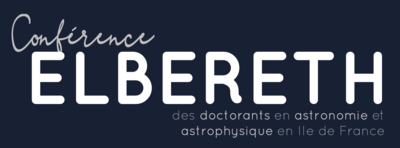Orateur
Description
A novel method of dynamical identification of asteroids families allowed the identification of almost all of them in the inner part of the Main Belt. It also allowed the identification of some asteroids not belonging to any of these families. Thus, we assumed that these objects are remnant of primordial planetesimals and their composition should remain more or less intact since their formation. Once identified, we performed spectroscopic studies in order to determine their surface composition and mineralogy. To do so, we carried out several ground-based spectroscopic observations and we analysed spectral features.
We found that a majority of them belong to the silicate-rich classes (S-complex) with a mineralogy close to the ordinary chondrites. Interestingly, our survey reveals that more than 60% of carbonaceous-rich (C-complex) planetesimals showed hydratation features, meaning then that aqueous alteration processes occurs on these objects. Other taxonomical groups have been found among our planetesimals.
Here I will present the spectroscopic and compositional results provided by our work as well as the implications for planetary formation models.
Day constaints
I won't be able to participate on Friday morning.
| Field | Planetology (including small bodies and exoplanets) |
|---|

